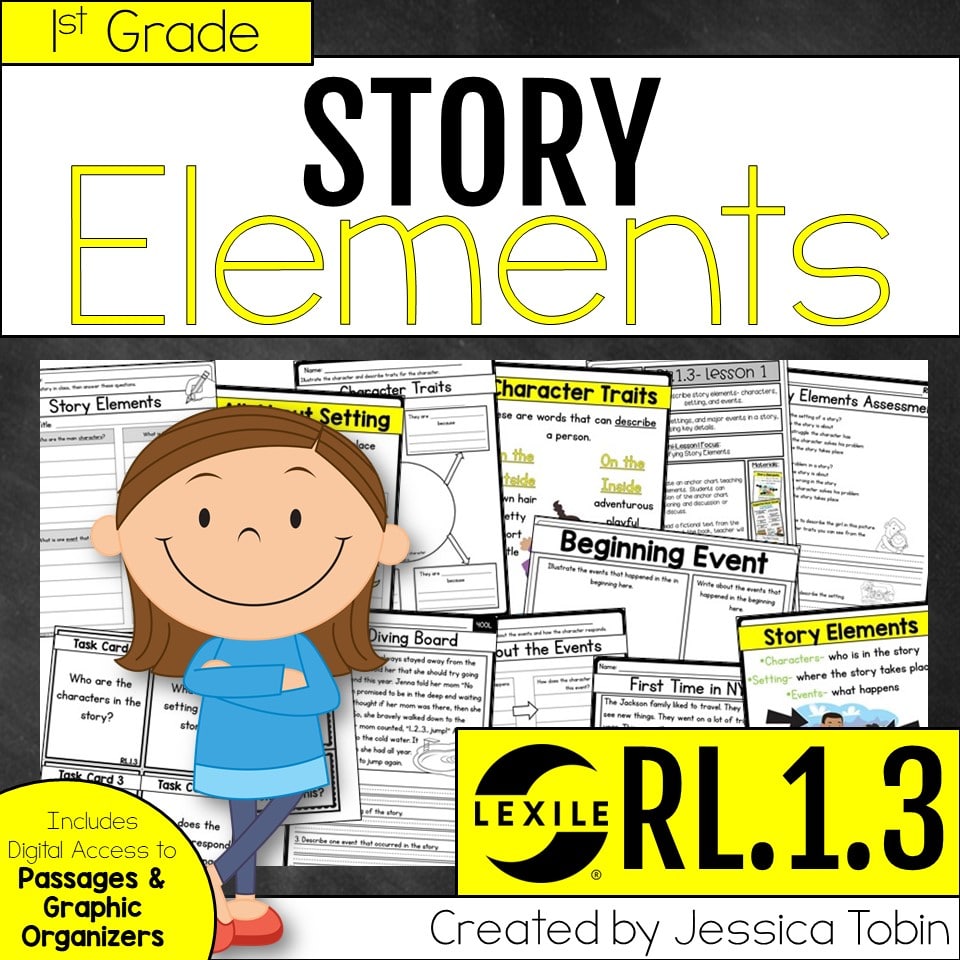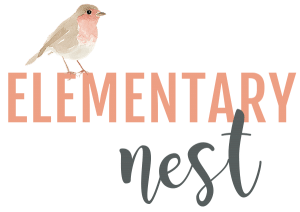
When talking about teaching story elements, it is important to note that each of the elements has essential parts. So, when we are teaching any of those elements, we must take a deeper look into the actual standard. Today, we are going to focus on teaching problem and solution, or what is referred to in Common Core terminology as “challenge” and “response.”
I like the terms challenge and response because they encourage us to look into the character over the actual events. How does the character respond to certain events? What are the actions, feelings, thoughts of a character that stem from an event in the story? In Kindergarten and 1st grades, students will be learning how to identify the major characters and events in a story. By 2nd grade, the focus will shift into character response and continues to dive deeper with 3rd and 4th, focusing on specific character feelings, thoughts, and actions. So, how do we teach this?
Make It Personal
Initially, you will want to make it personal. Allow students to connect to the concept by facilitating a discussion on challenges. Have students share with the class, or turn and talk about simple challenges they have faced and how they reacted to them.
Here are a few ideas to start with during the students’ turn and talk.
- Your pencil tip broke.
- You left your homework at school.
- Your science test is this Friday.
- You wake up with a fever.
- You spill juice in the living room.
These simple problems have fairly straightforward solutions. So, students will be able to build connections to the concept before diving into deeper challenges.
A simple t-chart could be made with some of your students’ scenarios as examples. Write the simple problem on the left and the simple solution on the right.
Then, Use Problem and Solution Scenarios

After discussing simple challenges/problems, your students will be ready to read short texts that contain a character facing a challenge. Allow students time to discuss the challenge and the character’s response to it. You can also continue your discussion from earlier, including larger challenges or problems.
Add to your anchor chart (or create a new one) noting the difference in simple problems and solutions and character challenges and responses. *This may be a time for you to discuss bigger challenges that your students have faced in their lifetimes, recalling how students may have responded differently. It is important for students to understand that different people/characters will respond differently to certain events. This is what helps us understand them.
Gather Books with a Strong Problem and Solution Plot

When teaching problem and solutions, read alouds are going to be essential. You will need to collect books that have a strong problem/solution or challenge/response plot. Look for books where the main character faces a clear and difficult challenge. One that allows us to see how the character acts, thinks, feels, etc.
Here are a few affiliate titles I suggest from Amazon!
- Ira Sleeps Over by Bernard Waber
- The Name Jar by Yangsook Choi
- Chrysanthemum by Kevin Henkes
- Harry the Dirty Dog by Gene Zion
- Jamaica’s Find by Juanita Havill
- Enemy Pie by Derek Munson
Each of these stories provides an opportunity for your students to look at character responses. They are great for group discussions about challenges and the different ways to face them.
Ask Students to Find Problem and Solution in Text
Subsequently, students will need to identify and describe the problem/solution within texts. When first learning the skill, students can illustrate what they think the problem and solution look like. Then, they can build their skills by writing their descriptions. The more opportunities students have with communicating their understanding, the better they will become. So, consider allowing them to do this multiple times before moving on.

Similarly, students will need to be able to read and comprehend fiction stories independently. So, the next step is for students to read on-level texts with comprehension questions. Printable or digital passages with skill-specific questions will be a huge help during this stage of the learning process. One of the great things about problem and solution practice is that, even in isolation, it can build students’ understanding of other elements like plot, character, theme, etc. So, include plenty of comprehension passages in your student practice activities.
Suggested Resource Focused on Problem and Solution

The second-grade standard, RL.2.3 is focused specifically on challenge and response. The unit above (some activities seen in the photos in today’s post) is complete with lesson plans, activities, graphic organizers, comprehension passages, task cards, and more, all focused on building this specific skill. However, each of the other grades contains an element of this skill within their own RL.3 standards. It is so important to ensure adequate practice and direct skill-focus for each of our grade levels!























